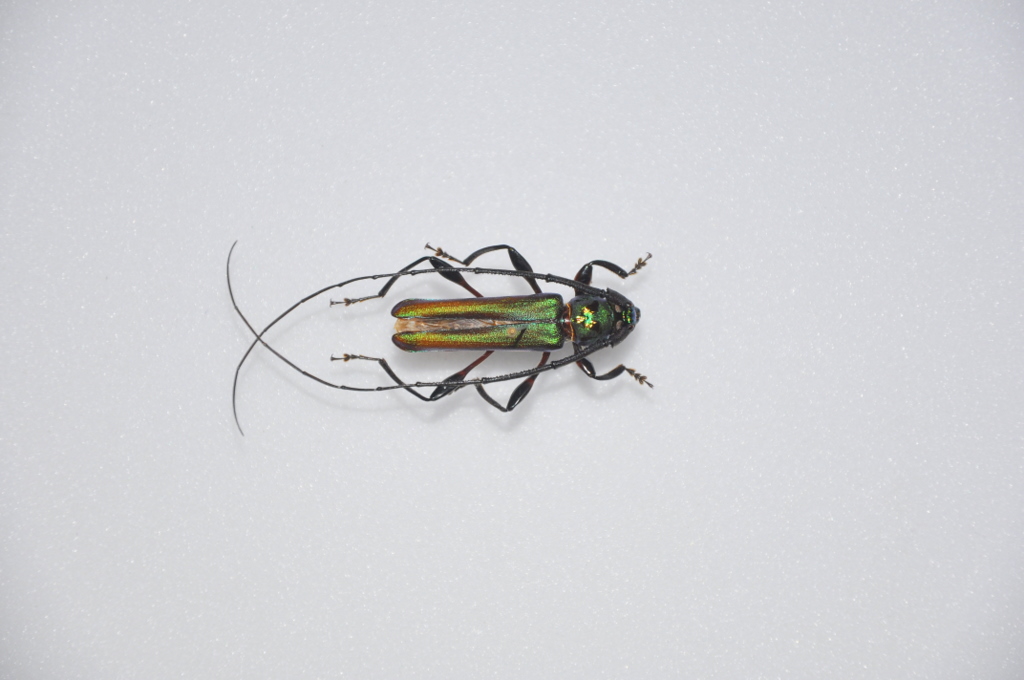| T O P I C R E V I E W |
| Pierre |
Posted - 10/01/2010 : 22:00:48

A Xystrocerini?
34 mm, Cameroon. |
| 4 L A T E S T R E P L I E S (Newest First) |
| Francesco |
Posted - 24/02/2017 : 21:36:23
Xystrocera nitidicollis Quedenfeldt, 1883.
Same specimen here. |
| Francesco |
Posted - 20/01/2010 : 12:38:44
A first revision was provided by Breuning (1957) in the Bulletin de l'Institut français d'Afrique noire (A) 19 (4): 1223-1271 (Révision du genre Xystrocera), but other papers followed this work.
The division in groups was provided by Martins (1980 - Notes, descriptions and checklist of African Xystrocera - Papéis Avulsos de Zoologia, S. Paulo 33 (5): 99-125), who introduced some taxonomical changes and (finally!) several drawings. Nevertheless, it has no keys since it is based on Breuning's work. I have got Martins' paper.
According to Martins, Xystrocera-species can be divided in four groups according their colour pattern:
- Elytra not metallic with irregular spots
- Elytra not metallic with a discal longitudinal dark band
- Elytra not metallic with or without a lateral dark band
- Elytra entirely metallic.
This group is subdivided in six subgroups according to the development of the eyes, of the antennal spines, and presence and shape of the sexual on the male pronotum.
|
| Pierre |
Posted - 20/01/2010 : 08:45:54
Where could I find good sources for identifications of Xystrocerini? What does distinguish these famous groups and subgroups you have mentioned? |
| Francesco |
Posted - 18/01/2010 : 09:13:15
Sure: male of Xystrocera.
The species with metallic green (or blue) colouration belong to the IV group, the richest of species, but I need to observe the lateral development of the eyes to identify at least the belonging to one of the six subgroups.
It might be X. asperata, but it is a lot of similar species. |
|
|


